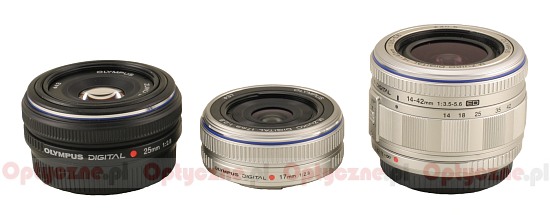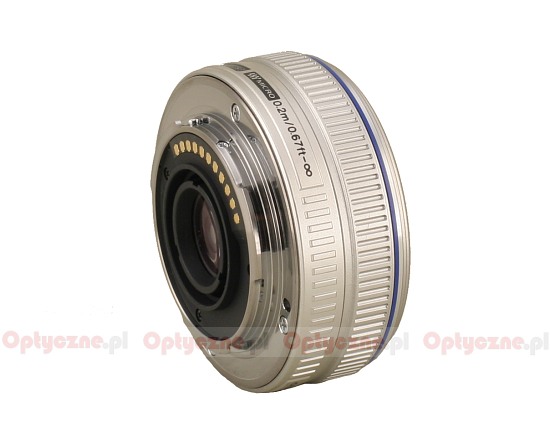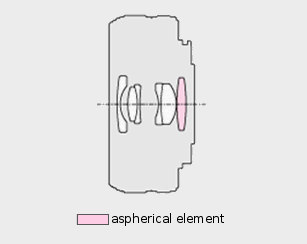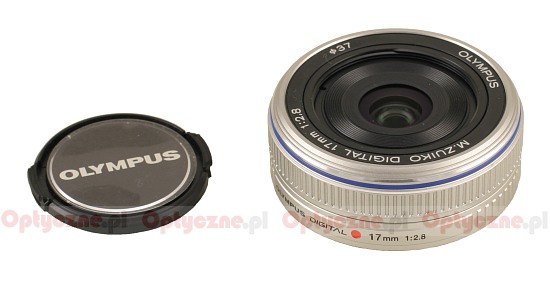Olympus M.Zuiko Digital 17 mm f/2.8
3. Build quality
 |
As for weight and dimensions, M. Zuiko 17 mm gives us exactly what we were promised when the Micro 4/3 system was introduced. Therefore we have a small and universal fixed focal length that will fit in even a small pocket and perfectly complements also small E-P1. To see once again how small the lens is, take a look at the following table, where M. Zuiko was compared with some other “pancakes”.
Please Support UsIf you enjoy our reviews and articles, and you want us to continue our work please, support our website by donating through PayPal. The funds are going to be used for paying our editorial team, renting servers, and equipping our testing studio; only that way we will be able to continue providing you interesting content for free. |
- - - - - - - - - - - - - - - - - - - - - - - - - - - - - - - - - - - - - - - - - - - - - - - -
You may say that the tested lens is small, but you can’t deny its solidity. It starts with a metal bayonet, which surrounds the rear lens having diameter of about 14 mm. Does it guarantee telecentricity of the lens? The rear lens is about 1.5 centimeter from the sensor, whose diagonal is almost 22 mm. I’m afraid it’s hard to do keep ideal telecentricity with this angle of view of the lens. However, more important than theoretical digressions is what the lens shows during practice, and this we’ll find out in the next chapters.
 |
Right behind the bayonet we find a metal lens body, on which there’s the name of the instrument, its serial number and a range of focusing. A bit further, there’s a manual focusing ring, covered in plastic and corrugated. It has no focusing scale, but, considering its size, it works quite conveniently with an appropriate resistance, allowing fairly precise use. Right behind the manual focusing ring the lens practically ends. Ever further we have only a small front lens surrounded by a non-rotating filter thread of 37 mm. In its rest position the lens doesn’t protrude over the body of the lens. Once we mount M. Zuiko on E-P1 and turn the camera on, however, the lens turns into working mode protruding the front tube with the lens by around 3-4 mm. In this position the lens focuses on infinity. Turning the focusing ring and moving to its minimum focusing distance, we notice that the tube protrudes by about 5-6 mm. Focusing, then, involves moving the whole system of lenses simultaneously. It’s worth to notice that rotating the manual focusing ring has an effect only when the lens is powered through contacts on the camera body. That’s because the ring is not entirely mechanical and rotating it doesn’t make the lenses move.
Our pancake is not a simple construction at all. It’s not easy to make a small and simultaneously wide-angle lens of f/2.8 speed. We have here 6 elements set up in 4 groups. One of the lenses was given an aspherical shape. The diaphragm consists of five blades and can be closed to f/22.

A buyer gets only two small caps in the set. The producer hasn’t anticipated a lens hood for this model yet.
 |






